Reconstruct History — Commander Mana Values
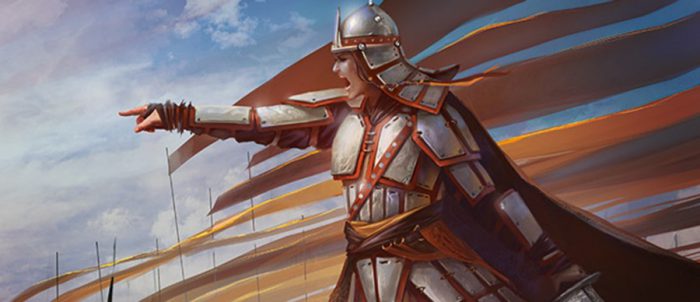
(Alesha, Who Smiles at Death | Art by Anastasia Ovchinnikova)
Man, Oh Mana Value
Welcome to another installment of Reconstruct History, where we examine popularity trends of cards and archetypes over time.
I want to do something a bit different this installment. Normally, we look at the rank of specific cards, or groups of cards, over time and talk about the trends. This week I want to zoom out a bit, and focus on something about the format more generally.
See, something caught my attention on 9/8/2021 when spoilers for Innistrad: Midnight Hunt were flying around. On this particular day, I woke up to Rem Karolus, Stalwart Slayer, Ludevic, Necrogenius, Slogurk, the Overslime, Vadrik, Astral Archmage, and Katilda, Dawnhart Prime all populating various Discords, subreddits, and Twitter feeds.
While Lier, Disciple of the Drowned was also spoiled the same day, I couldn't help but think: "Wow, not only is that six commanders spoiled in the course of a few hours, but five of them (83%) are mana value three or less."
Since that day, I've been working to try and analyze the mana value (formerly: 'converted mana cost', or CMC) for every Commander-legal legendary creature and planeswalker that can go in the command zone, and how it may correspond to rank, popularity, or even the possible 'lowering' of mana values in the current age with increasingly more product. This is a big article, so grab a nice eggnog or cup of coffee for this one.
Criteria
- Commanders: Legendary creatures and planeswalkers that can be your commander (as of November 19, 2021)*
- Timeframe: Alpha (August 5, 1993) - Innistrad: Crimson Vow (November 19, 2021)
- Breaks: By year and/or by set
First, a big disclaimer. Obviously, power creep is a real thing, and R&D over at Wizards of the Coast (Wotc) acknowledge this. They aren't going to be beholden to design from 20 years ago, and nor should they — the game and player base is different now than it was then. I may be one of the less than 30 people with a Kamahl, Pit Fighter deck, but I can't honestly throw my fists at the sky and expect that WotC is going to continue printing six-mana 6/1s. Part of the allure of older commanders is trying to get them to work despite their weaknesses, and despite the fact they were designed for a game and environment from yesteryear.
Just look at the trend line (blue line) for rank (i.e., popularity) of planeswalkers and legendary creatures that can be your commander over time, and you'll notice that more recent options are just more popular:
The allure of newer commanders at lower mana values is undeniable: you get to do more things earlier in the game, and likely, throughout the course of the game. There's a lot of fun to be had building around a commander and actually being able to play said commander rather than building around one and waiting until turn 6-9 to be able to even get them out.
Additionally, the mana value of each creature isn't always the best indication of a commander's potential. The new Orcus, Prince of Undeath, Gadwick, the Wizened, and Old Stickfingers have X in their cost, meaning they can be modally cast to scale at different points in the game, but often for our purposes their respective mana values are simply 4, 3, and 2. Tasigur, the Golden Fang and Hogaak, Arisen Necropolis are hardly ever cast for their actual mana value, while commanders like Prossh, Skyraider of Kher or Jeleva, Nephalia's Scourge want to be cast for more mana, and Edgar Markov or Oloro, Ageless Ascetic hardly ever want to be cast at all.
As a final caveat, Partners are weird. Trying to plot the mana value by date, set, or rank for any given Partner while having the ability to be paired with another creature with another mana value, rank, set, or print date makes things fairly complicated. Prior to Commander Legends, when we only had a few Partners, this wouldn't have been too bad, but it gets much more complicated with the 12,000+ Partner combinations we now have access too. As such, for the most part, I'll only be looking at the Partners individually for their mana value.
All this goes to say: like a beautifully marbled steak, take this analysis with a hefty pinch of salt.
Results
Commander Mana Values Over Time
Let's start with some measures of central tendency for commander mana values. Below, you'll find a carousel containing the mean and median mana values by date. This was calculated by taking the average mana value for a given 'set' (i.e., print-date) and plotting them all over time from 1993 to 2021. Scroll to the right and you can see each individual set's mean and median mana value for commanders printed.
This is pretty interesting, as we do see a general decline in mana values over time since ~2005, with the last few years really trending towards 3- and 4-mana-value commanders. However, it's noteworthy that we are Swamping out some meaningful variation here, as there has obviously been more commander options (both legendary creatures and planeswalkers that can be your commander) printed in the last few years as EDH has become the game's most popular format.
Commander Mana Values by Rank
I also wanted to see how popularity might measure up to mana value, specifically organizing our data chronologically by set. In other words: do we see the decrease in mana value also corresponding to an increase in popularity?
Let's start with a scatterplot, with the X-axis corresponding to set (chronologically ordered) and the Y-axis corresponding to that commander's rank (the higher on the Y-axis, the higher ranked they are), with Mana Value (MV) coded to color. I'm using rank rather than decklists here, but they are closely related. I've 'jittered' the points a bit here so they aren't completely stacked on top of one another ('overplotting').
Well, that's not entirely informative. We can see sparsity of legends in early sets all right, and how earlier sets tend to correspond to lower rank, but coding Mana Value to a color with so many data points doesn't reveal too many trends. If anything, we just see that over time (further right on X-axis), we see rank generally increase like our blue line plot above, and a lot of commanders in the 3-6 MV range.
So let's reframe it. Let's put Mana Value on the X-axis and plot their distributions by Rank (Y-axis). In other words: what's the distribution of rank for each given Mana Value? Let's start with every legendary creature and planeswalker that can legally be your commander, and move to the Top 100 and Top 200 (as per EDHREC) ranked commanders in subsequent plots. I'll plot these as scatter plots with each individual commander card, then overlay it with a box and whisker plot so you can see the overall distribution and where the mean (solid line in the box) falls.
Rank vs. Mana Value of Commander-legal commanders (1993 - 2021)
That's a bit better. We can see the general distribution of all commander mana values and how their popularity 'spread' (Y-axis) might explain some of their trends as we look at rank.
Finally, we can just look at the distribution of mana values by rank as a histogram, filtering to the Top 100 and Top 200 commanders and see what mana values come up most:
So what we can see from these latter plots is that while there's a roughly normal ('bell curved') distribution of commander mana values for all commanders that becomes much more 'positively skewed' (leaning left/lower on X-axis, with tail trailing right/higher on X-axis) as we filter down towards more popular commanders. Four-drop commanders occupy the largest contingent and become increasingly more likely as you move higher in popularity.
Time to Reflect
Alright, with some data out of the way, it's Time to Reflect!
The Red Queen's Race
Illustration by Sir John Tenniel (d. 1914), Through the Looking Glass, Chapter 2
“Now, here, you see, it takes all the running you can do, to keep in the same place. If you want to get somewhere else, you must run at least twice as fast as that!”
-Red Queen to Alice,
Through the Looking Glass (Alice in Wonderland)
Lewis Caroll
Amidst all the hectic pacing and surreal depictions accompanying Alice's hand-in-hand running with the Red Queen, this particular quote stands out. It captures a paradox of time and speed, a seemingly endless race just to stay put. This quote inspired biologist Leigh Van Valen in 1974 to coin the 'Red Queen Hypothesis', which argued that organisms must continuously evolve in order to avoid extinction due to other organisms' evolution. Since then, the approach has been extended into a manner of other disciplines to generally speak about co-evolution and the basis of an arms race.
I think this is an important lens to also consider for EDH. When looking at these trends, I think the Red Queen Hypothesis has some explanatory power here, and here's why:
The EDHRECast just recently discussed popularity trends in relation to the product deluge we've been experiencing of late. Notably, they mention that at the time of recording, the top 101 commanders account for as many decks as the rest of of the 1,100+ other commanders combined. In other words, half of the decks scraped here at EDHREC can be accounted for by only 8% of the overall format-legal commanders.
Now, it's been a few weeks since recording, but I wanted to add some more data to this in relation to our topic here. Additionally, we see that 47% of the top 100 commanders were printed in the last two years (2019 - 2021). That means that approximately 40% of all 776,000+ decks scraped by EDHREC are helmed by a commander printed in the last two years. While EDHREC is only scraping from the last two years, and thus likely to be skewed towards more recent lists, I do think it's fascinating that such a sizeable percentage is reflective of the last two years.
It raises the question: are you at an inherent disadvantage with your 2008 commander against three opponents with freshly minted 2021 commanders? Not necessarily, no! Krenko, Mob Boss (2012) still slaps, and Atraxa, Praetors' Voice is back to top dog, and she was printed in 2016!
But I do wonder: given the increase in product and the accompanying focus on Commander by WotC, does it feel to you like we are in the Red Queen's Race? Does it feel like the format is in constant flux all around you and you have to keep running just to stay still? I know for me it sure does. Even deck's 99s seem in constant flux with so much product, and EDH can sometimes weirdly feel more like Standard and less like an eternal format with so many new options.
It really makes you wonder: just where will we be in two years' time?
The Tiny Leaders-ing of the Format?
For those who may be relative newcomers to Commander, there is (was?) an adjacent format called Tiny Leaders which utilizes similar Commander-style rules and gameplay (multiplayer, singleton, 25 life points vs. 40, and 50-card singleton vs. 100) but with a crucial stipulation: no card could have a mana value higher than three.
While a fun stipulation for some, others quickly found the format lacking in board wipes or other 'top end' scaling in favor of aggressive, lean, and mean killing machines. "Solved" is a word you see come up time and time again in relation to the format, despite banning notable powerhouses like Edric, Spymaster of Trest and Najeela, the Blade-Blossom. In fact, as of August 2021, the format has been on a 'hiatus.'
While I'm not at all saying you can't enjoy Tiny Leaders, I think it brought about interesting discussions on card evaluation, and I find the 'leaning' of Commander nowadays having some interesting parallels. Emphasis on two-mana mana rocks, swapping your Altar's Reap for Village Rites, etc., is increasingly encouraged — and for good reason — as making small cuts here and there can help to sequence more actions per turn.
For many, it can lead to an overall more impactful, fun experience with lots of actions, and I'm all for those Lurrus of the Dream-Den players out there. While I don't presently have the data to prove it, I wouldn't be surprised if the average deck's mana curve across all players has trended down in the last few years.
But there's another side of the story where higher mana value commanders become easily stigmatized. I don't have to dig too deep in created content, Reddit posts, or Discords to see "a billion mana" come up to describe anything over five mana value that isn't an inherent bomb unto itself.
Which begs me to ask a few hypothetical questions:
- What's the cost when we take Najeela, the Blade-Blossom, Sisay, Weatherlight Captain, or Yuriko, the Tiger's Shadow as our litmus test for what a three-mana-value commander "should" look like?
- What's the cost when we take Omnath, Locus of Creation, Atraxa, Praetors' Voice, or Kess, Dissident Mage as our litmus test for what a four-mana-value commander "should" look like?
- What about Korvold, Fae-Cursed King, Chulane, Teller of Tales, or Kenrith, the Returned King as our litmus test for what a five-drop "should" look like?
- What are the costs (social, financial) when we say nine-mana spells should be evaluated against Expropriate, or else just run something leaner?
I have no answers, but I'd love to hear your response to these hypothetical questions of how you evaluate cards, or the language you encounter in the wider community.
The Price of Removal
The recent episode of the Legendary Creature Podcast (warning: explicit content) titled "Remove or..." brought up an excellent discussion (around the 1:30:54 and 1:37:18 marks) of the difficulty opponents face against low mana value commanders.
In addition to to some of the strengths mentioned above, low mana value commanders can sometimes, paradoxically, avoid removal. When spot removal is in limited supply, do you really want to fire off one of your few removal spells to take out a low mana value commander, knowing it's going to come right back out in two turns (or less)? You know letting a Sythis, Harvest's Hand stick around may just well accrue enough value to swamp you out of the game, suggesting you should probably remove it. But removing it can be a begrudging experience, knowing you've only slightly slowed their gameplan down (tempo) at the cost of one of your select removal options. What happens when that Nyxbloom Ancient later hits the field?
It raises the question: just what is the Price of Fame? Commander tax?
Lower mana value commanders can afford to be removed a number of times, where higher mana value options (MV 6+) cannot. Commanders with an MV of 2 (e.g., Belbe, Corrupted Observer, Sythis, Harvest's Hand) can be removed twice before Firesong and Sunspeaker even grace the field (let alone the lower options being in green and higher ones in non-green!). If Firesong and Sunspeaker get removed even once, eight mana is a lot to ask for in Boros. For my own playgroup's statistics (236 games), our average game length is 9-10 turns. That means, unless I get lucky with a swell of mana ramp, I'm probably only ever resolving Kamahl, Pit Fighter once or maybe twice if I'm lucky. For many commanders with higher mana values, getting removed once means they're functionally out of the game. As Andy in the podcast above says: "It's almost like permanent death."
Additionally, low mana value commanders are better suited to take advantage of some splashy cards like the Commander 2018 'Storm' cycle Skull Storm, Fury Storm, etc., since they are more likely to repeatedly hit the field after being removed or sacrificed.
Getting Value Out of Big Mana Values
Despite what I'd call the general 'leaning' of the format, I think there are those of us out there speaking to the redeeming qualities of running bigger mana value commanders. More importantly, I think Wizards of the Coast: Research and Development team is listening.
Let's take Jeweled Lotus as an example (and as we'll see, a bad one at that, but bear with me). Jeweled Lotus caused quite the hullabaloo when it was spoiled for Commander Legends, originally stoking a lot of debate and some extreme voices calling for its banning. While I think it's safe to say everyone has simmered down a bit on it as we've had time to digest its actual potential, I do think there's a case for it in helping older commanders actually come out the gates; say, Szadek, Lord of Secrets. In this instance, Jeweled Lotus can act almost as a leveler of power-creep itself, helping to mitigate the mana value of a legendary creature designed for a different format some 16 years ago.
The issue is, of course, that Jeweled Lotus can just be run in the very decks Szadek, Lord of Secrets might need help against. I couldn't say it any better than Joseph Megill already did in his exhaustive Ranking of 2020 Mana Rocks:
Turn 1 Urza, Lord High Artificer is a depressing end to a game before it begins; turn 1 Gallowbraid is a story that makes the game memorable, and any good playgroup is going to respect that difference.
While Jeweled Lotus may not be the best example, as it effectively is "the tide that raises all ships", including the ones that are already at an advantage, I do think WotC is on to something as of 2021. In the last year alone (2021), we've gotten Stinging Study, the 'Visions of' cycle (Visions of Ruin, Visions of Dread, Visions of Duplicity, Visions of Glory, Visions of Dominance), and Imposing Grandeur.
My guess is, as WotC continues to print more product, more legendary creatures, and leaner options, they are also trying to be careful in not solely rewarding going 'lean' with cards such as these. While the presence of a few one-off cards like this may not be enough to convince some to suddenly dig out their Garza Zol, Plague Queen, I do think that if this design trend continues, we may actually get a density of effects that directly reward you for choosing to play a bigger commander.
Personally, I'm a big fan of this, as I think it can breathe new life into older commanders that were simply designed at a different point in the game's history, but I would love to hear your thoughts.
2021: A Home Run, or Strike Out?
During the early 2000s in Major League Baseball, the Oakland Athletics, up against budgetary constraints, utilized statistics (sabermetrics) to inform their team management and recruiting. They pivoted from tradition and focused on slugging and on-base percentages rather than prioritizing costly homers, batting average, or bases stolen. In doing so, they fundamentally changed their evaluation of players for recruitment, such as prioritizing college players over high school protégés, since college players have more data to make informed decisions about. The rationale was: making many small changes like this would aggregate over the course of a game and season. And sure enough, it did. The approach instituted a paradigm shift in baseball evaluation, and fundamentally altered the way numerous teams utilize data and statistics to make informed decisions about team recruitment and management.
I can't help but wonder if there's similarity in our lovely format of Commander. With an explosion of data, content creation, and community members in the last few years accompanied by WotC's emphasis on Commander, I wonder how much evaluation of cards, and specifically, commanders themselves has changed since the format's inception. Looking at my own roster, some 54% of my decks are led by commanders been printed in the last two years — meaning I'm just as 'to blame' for this shift (if not more so considering I'm 14% higher than the site average of 40%!) as anyone.
So I'd love to hear from you: what's your evaluation of commander mana values nowadays? Do you wince at anything over 6 mana, or are you excited by it? Do you hope for more Stinging Study effects to breathe life into an old commander you just felt has been crept out?
Let's hypothetically assume there's a density of these effects in years to come to where an old-school commander with a big mana value can hang well with the top dogs of today: who would you build? I know mine would be Volrath the Fallen - what about you?
Thanks to all you readers out there over the last year, and for making Magic: The Gathering a much-needed escape in these trying times. I wish you all happy (and safe) holidays!
Sound off in the comments below, and until next year!
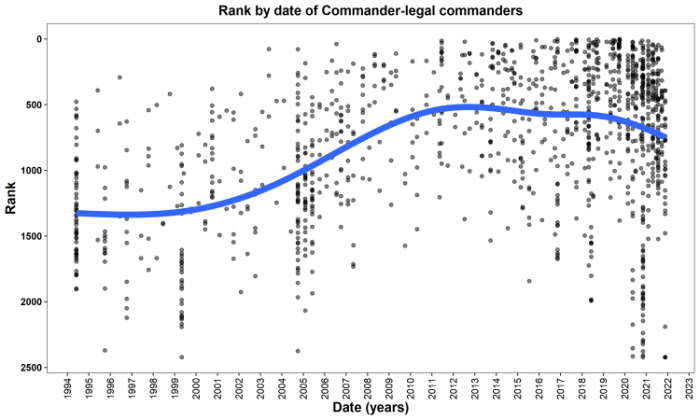
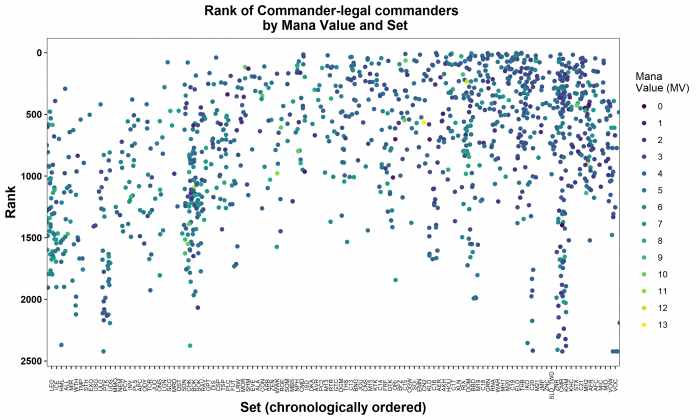
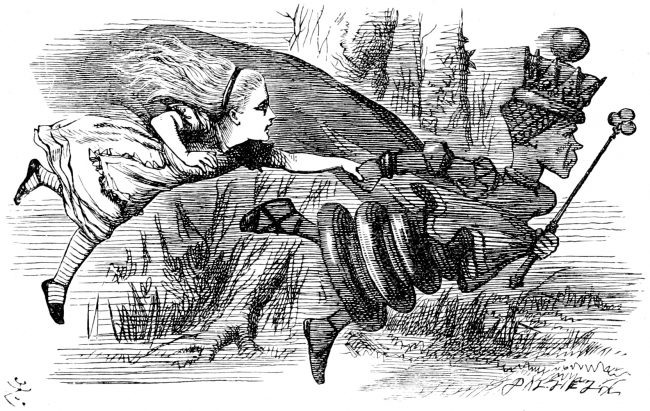
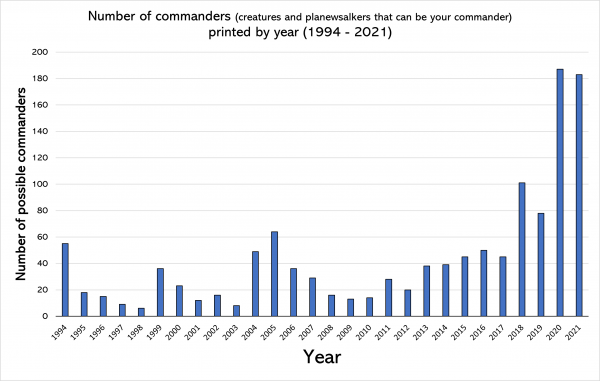
EDHREC Code of Conduct